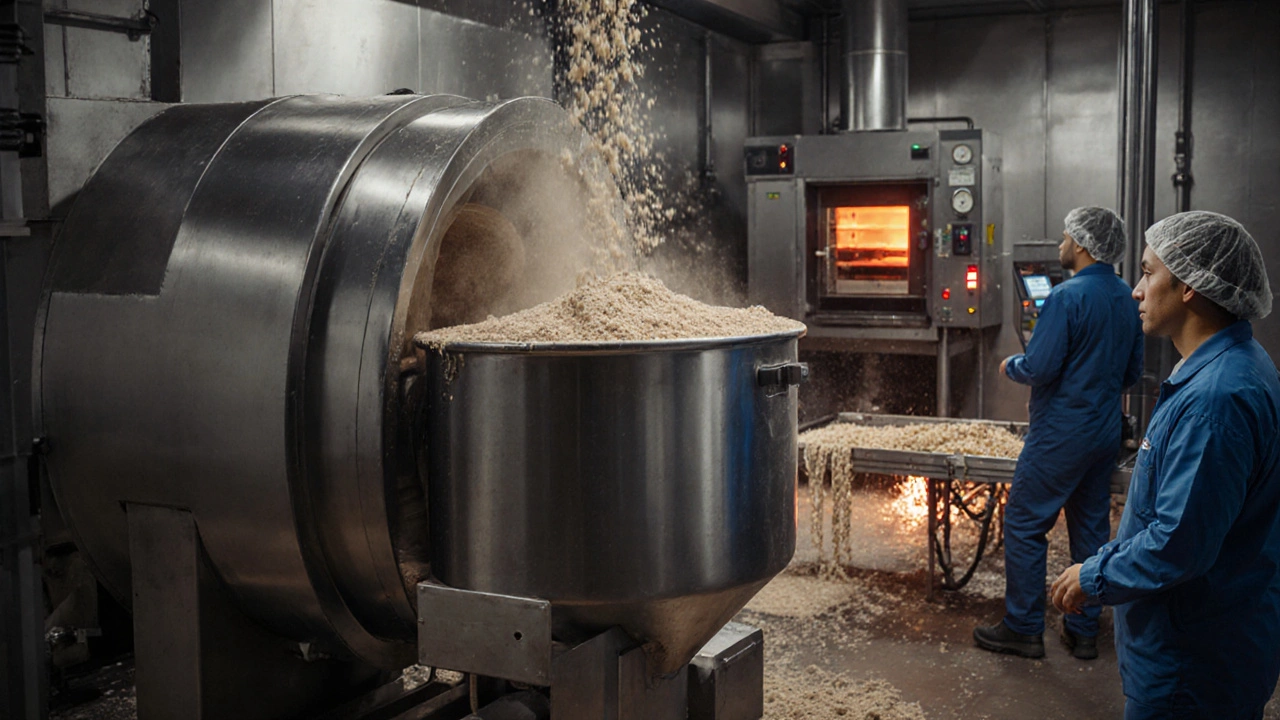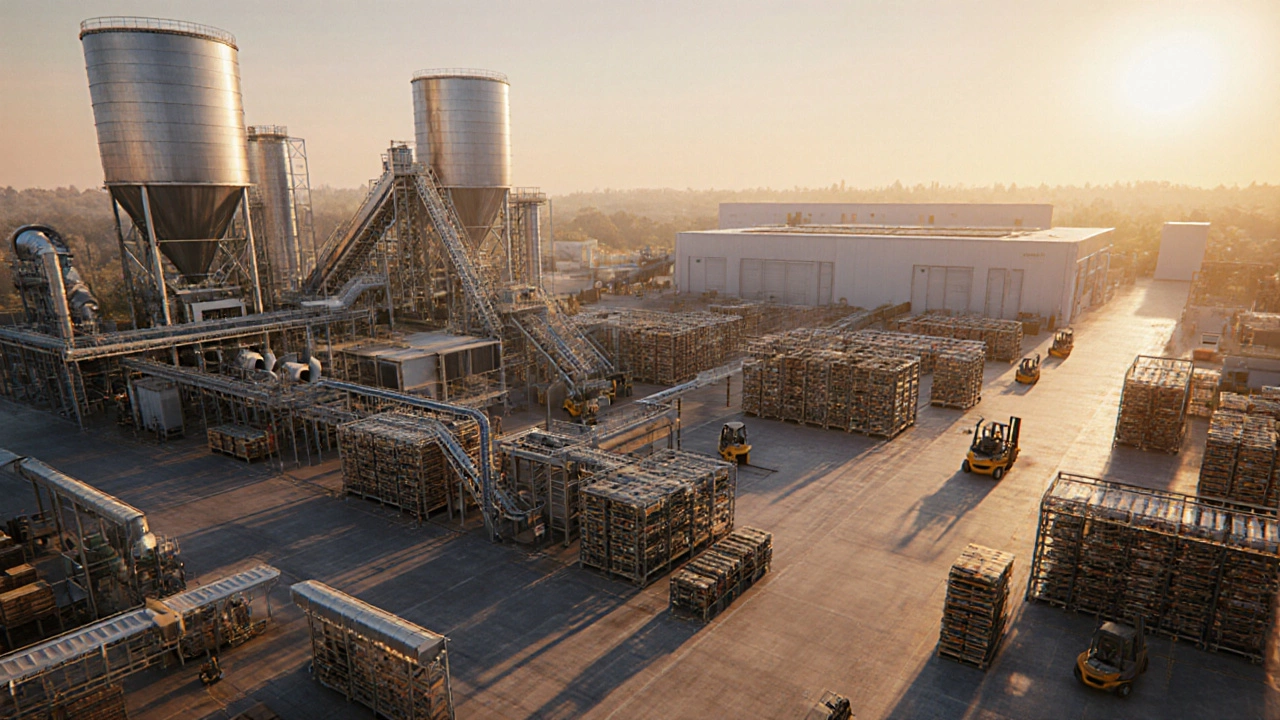Food Industry Units Explorer
Explore the core units that make up the food industry supply chain. Click on any unit below to learn more about its function, key metrics, and typical equipment.
Processing Unit
Converts raw materials into food products
Packaging Unit
Encloses and markets the finished product
Distribution Center
Stores and ships finished goods
Retail Outlet
Final point of sale to consumers
Service Unit
Prepares meals for immediate consumption
Quality Control Lab
Ensures safety and compliance
R&D Center
Develops new products and processes
Regulatory Unit
Manages legal and compliance standards
Key Metrics
Common Equipment
The term food industry units can sound vague, but it actually refers to the distinct operational blocks that turn raw ingredients into the meals you buy at the store. Whether you’re a budding entrepreneur, a supply‑chain manager, or just curious about how your favorite snack reaches you, knowing the core units helps you see the whole picture and spot where value is added-or lost.
Quick Takeaways
- Food industry units are functional groups like processing plants, packaging lines, distribution hubs, and retail outlets.
- Each unit has specific metrics (capacity, yield, lead time) that drive profitability.
- Understanding unit interactions reveals bottlenecks and opportunities for cost‑saving.
- Typical units: Processing, Packaging, Distribution, Retail, Service (catering), Quality Control, R&D, and Regulatory.
- Optimizing each unit with clear KPIs and technology upgrades boosts overall efficiency.
What Exactly Is a "Unit" in the Food Industry?
A Food Industry Unit is a self‑contained functional segment that performs a specific set of tasks within the food value chain. Units can be physical locations (a plant or warehouse) or logical groups (a quality‑control department). They are linked by material flow, information exchange, and shared goals like safety, cost control, and speed to market.

Core Operational Units
Processing Unit
Processing Unit is the heart of any food business. It transforms raw agricultural inputs-grains, meat, dairy-into finished or semi‑finished products using equipment such as mixers, ovens, extrusion machines, and fermenters. Typical metrics include throughput (tons per day), conversion yield (%), and energy usage (kWh/ton).
Packaging Unit
Packaging Unit encloses the processed product in containers that protect, inform, and market the item. Key equipment ranges from flow‑fill machines to vacuum sealers. KPIs focus on line speed (packs/min), packaging waste (%), and labeling accuracy.
Distribution Center
Distribution Center (DC) stores finished goods and orchestrates outbound logistics to retailers or food‑service customers. Performance is measured by order‑to‑ship time, inventory turnover, and cold‑chain compliance.
Retail Outlet
Retail Outlet is the final point of sale-grocery aisles, convenience stores, or online marketplaces. Sales velocity, shelf‑life compliance, and shrinkage rate are the core metrics.
Service Unit (Catering & Food‑service)
Service Unit prepares meals for immediate consumption in settings like schools, hospitals, or corporate cafeterias. Labor efficiency (meals per labor hour) and menu‑cost ratio drive decisions.
Quality Control Lab
Quality Control Lab conducts microbiological, chemical, and sensory testing to ensure safety and compliance. Turn‑around time for test results and defect detection rate are crucial numbers.
R&D Center
R&D Center explores new formulas, processes, and packaging innovations. Success is tracked by the number of patents filed, time‑to‑market for new products, and consumer acceptance scores.
Regulatory & Compliance Unit
Regulatory Unit monitors food‑law changes, manages audits, and ensures all other units meet standards like FSSAI (India), FDA (US), or EU regulations. Compliance rate and audit findings per year are the main indicators.
How Units Interact in the Food Supply Chain
The flow starts at the processing unit, moves to packaging, then on to the distribution center, and finally reaches retail or service outlets. Parallel streams-such as quality‑control testing after processing and before packaging-act as gatekeepers. Data from the R&D center often feeds back into processing to tweak formulations, while the regulatory unit provides guidelines that shape SOPs across all units.
When one unit lags (e.g., a packaging line slowdown), the ripple effect can increase inventory holding costs at the DC and lead‑time at retail. A well‑orchestrated supply chain uses integrated ERP systems to share real‑time metrics, enabling quick adjustments.
Comparison of Core Units
| Unit | Primary Function | Typical Size / Capacity | Top KPI | Common Equipment |
|---|---|---|---|---|
| Processing | Convert raw material to food product | 10‑500tons/day | Yield % | Mixer, Oven, Extruder |
| Packaging | Enclose product for safety & branding | 5‑200packs/min | Packaging waste % | Flow‑fill, Vacuum sealer |
| Distribution | Store & ship finished goods | 20‑200k pallets | Order‑to‑ship time | Racking, Cold‑room, Forklift |
| Retail | Sell to end‑consumer | 10‑500 SKUs | Sales velocity | Shelf‑display, POS system |
| Quality Control | Test safety & quality | 50‑300 tests/day | Defect detection rate | Chromatograph, Incubator |

Common Pitfalls When Managing Units
- Isolated decision‑making: Changing a processing recipe without informing the packaging line can cause overflow or under‑fill.
- Neglecting cold‑chain integrity: A distribution center lacking temperature monitoring will spoil perishables, leading to costly recalls.
- Over‑reliance on manual logs: Paper‑based QC records delay defect identification; digital LIMS systems cut the lag by up to 60%.
- Under‑estimating regulatory impact: New labeling laws can force a re‑print of packaging within weeks; early alerts from the regulatory unit prevent emergency shutdowns.
Tips to Optimize Each Unit
- Implement real‑time dashboards: Consolidate KPI feeds from processing, packaging, and distribution into a single visual hub. This spotlights bottlenecks instantly.
- Adopt modular equipment: Smaller, plug‑and‑play machines let you scale capacity up or down without major capital outlays.
- Use predictive maintenance: Sensors on mixers and sealers predict failures 48‑72hours before they happen, reducing unplanned downtime by 30%.
- Standardize data formats: A common XML/JSON schema across units eliminates manual data translation and speeds up audit reporting.
- Engage R&D early: Run pilot batches in the processing unit before committing to full‑scale runs; this cuts product re‑work costs by roughly 15%.
Frequently Asked Questions
What defines a unit in the food industry?
A unit is a distinct functional segment-like processing, packaging, or distribution-that carries out a specific set of tasks within the overall food value chain. Each unit has its own equipment, personnel, and performance metrics.
How many major units are there in a typical food‑manufacturing operation?
Most mid‑size operations comprise eight core units: processing, packaging, distribution, retail, service (catering), quality‑control, R&D, and regulatory/compliance.
Which KPI matters most for a packaging unit?
Packaging waste percentage is a top KPI because it directly impacts material cost, sustainability goals, and trash‑handling fees. Line speed and labeling accuracy are also critical.
Can technology reduce downtime across units?
Yes. IoT sensors, predictive‑maintenance algorithms, and integrated ERP systems can cut unplanned downtime by 20‑40% across processing, packaging, and distribution units.
What role does the regulatory unit play in day‑to‑day operations?
The regulatory unit monitors law updates, prepares audit documentation, and ensures that every other unit follows labeling, safety, and hygiene standards. Its early alerts prevent costly recalls.
